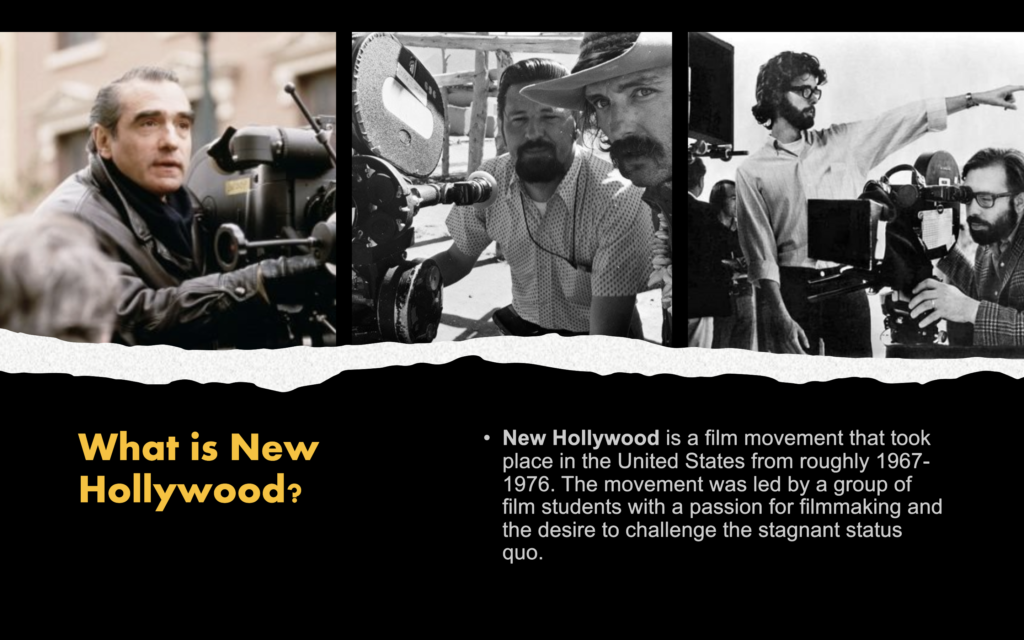

Bonnie and Clyde – https://www.youtube.com/watch?v=hZpm1zj9510&t=51s
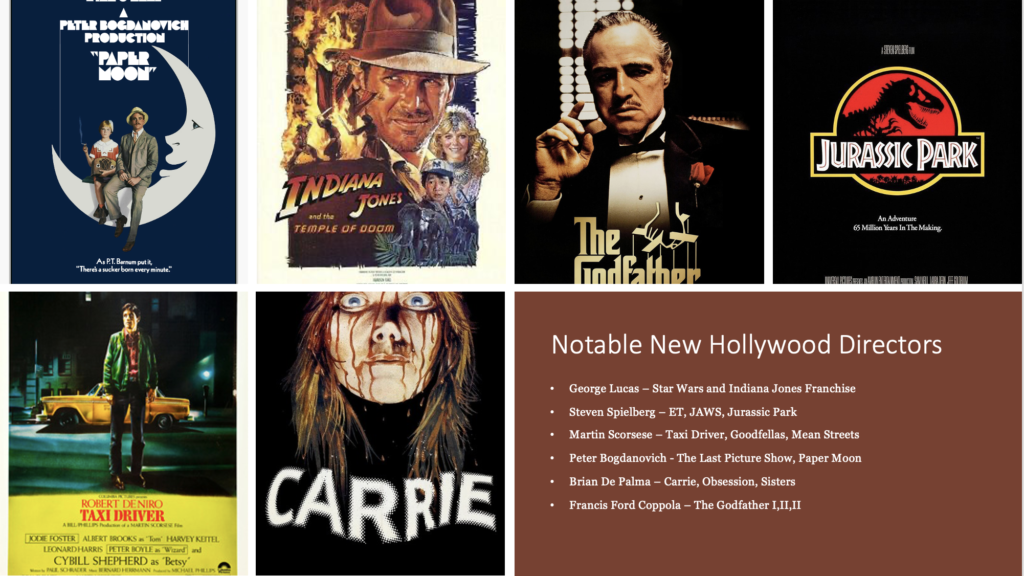

Jaws – https://www.youtube.com/watch?v=U1fu_sA7XhE
Star Wars – https://www.youtube.com/watch?v=1g3_CFmnU7k
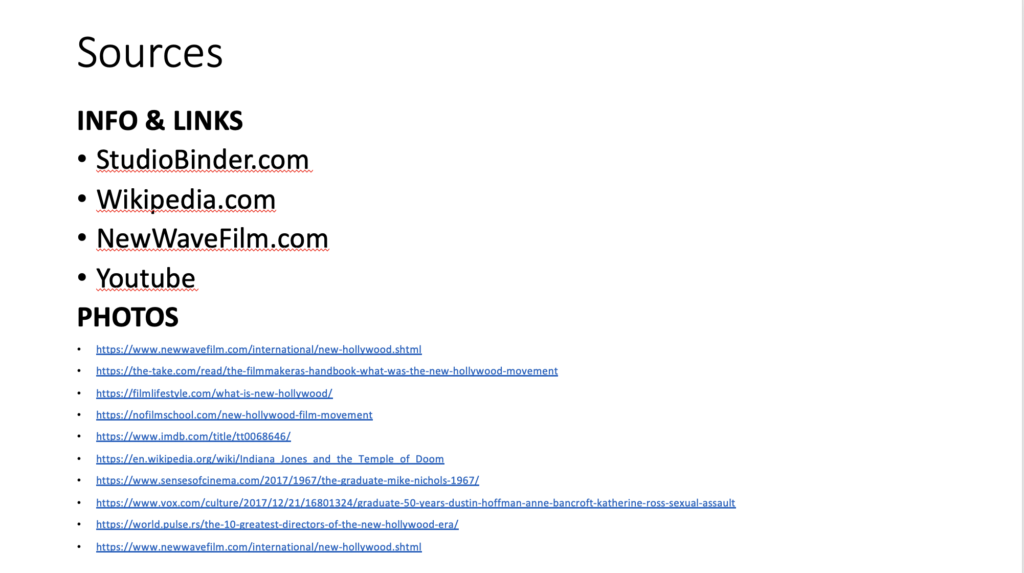




Jaws – https://www.youtube.com/watch?v=U1fu_sA7XhE
Star Wars – https://www.youtube.com/watch?v=1g3_CFmnU7k

New Mexican cinema, also referred to as Nuevo Cine Mexicano is a Mexican film movement started in the early 1990s. Filmmakers and critics consider Nuevo Cine Mexicano a “rebirth” of Mexican cinema because of the production of higher-quality films.
This rebirth led to high international praise as well as box-office success, unseen since the golden age of Mexican cinema of the 1930s to 1960s.
The quality of Mexican films suffered in the decades following the golden age due in part to Mexican audiences watching more overseas films, especially Hollywood productions. This resulted in the rise of infamous Mexican genres such as Luchador films, the low-budget direct-to-video Mexploitation film.
It’s themes include identity, tradition, and socio-political conflicts within Mexico itself.
Some films and directors:
Alfonso Cuaron’sY Tu Mamá También (2001) – nominated for an Academy Award for Best Original Screenplay.

At the Golden Globes for Best Foreign Film, and Alejandro G. Iñárritu’s Amores Perros (2000), which was nominated for Best Foreign Film at the Academy Awards.

Guillermo del Toro’s Pan’s Labyrinth a 2006 Mexican-Spanish that won numerous international awards.

The Golden Age of Mexican Cinema occurred from the 1930s to the 1960s, afterward, a period of low-budget B-movies funded by the state of Mexico was the primary source for films for the Mexican public. A comeback of Mexican cinema was believed to occur in the 1970s, however, its success was short-lived as the majority people from Mexico preferred Hollywood films.
Before the 1990s, the Mexican film industry was primarily funded by the state in coordination with the Instituto Mexicano de Cinematografía (Mexican Film Institute). There was a decrease in Mexican audiences watching Mexican-produced films in favor of Hollywood blockbusters due to the economic crash in 1994.The IMCINE produced roughly five films a year during the crisis.
The main influx of directors and filmmakers, as well as funding, primarily came from the IMCINE.

Cinema Du Look was a French Movement in Cinema that was observed between the 1980s and 1990s.
Origins & Style:
The Cinema Du Look movement focused on a film’s theme over its narrative, character’s style over their importance in plot. The genre was renowned for being focused on distinct visual style.
French President Francois Mitterand was controversial across France, especially his policies towards young people that caused further uproar and unrest in cities such as Paris. Directors in the Cinema Du Look moment wanted to empower and represent this ‘New Future for France’ through Cinema Du Look and its alienated young Characters.
Key Films & Directors:
‘Leon: The Professional’ – Luc Besson, (1994).
Luc Besson was a famed advocate for the movement, in his film ‘Leon: The Professional’, released in 1994, many conventions of the movement are displayed.
While the narrative is slim and predictable considering the genre, Besson focuses primarily on the look of the film. Leon & Mathilda are two incredibly distinct looking characters with unique backstories & personalities.
’37°2 le matin’ – Jean Jacques Beineix, (1986).
Released in 1986, ’37°2 le matin’, (or ‘Betty Blue’ in English), tells the dramatic and psychological story of two doomed lovers Betty & Zorg.
Beineix very cleary demonstrates the narrative conventions of Cinema Du Look, as Betty displays many extreme episodes of violent drama, alongside Zorg. The plot is very extreme & often the psychological aspects of the film sidetrack the plot, with lengthy scenes of violence juxtaposed with romance showing the films categorization as Cinema Du Look.
‘Les Amants du pont-neuf’ – Leos Carax, (1991).
Detailing the love story between a circus-performing alcoholic and a painter who’s slowly turning blind; ‘Les Amants du pont-neuf’ is a film that focuses on the style in Cinema Du Look.
Famously, in the ‘Lovers on the Bridge’ Sceene, (in which the film is named after), a blend of score, acting, tracking and mise-en-scene in the form of perfectly timed fireworks highlights the free-living and romantic message the film puts across the viewers.
Overview:
Overall, it is evident that Cinema Du Look was a movement of romanticizing everyday life for viewers; the mundane of an assassin and an orphaned girl hiding for survival, a tragic & violent love story, as well as two faulted lovers on the dirty streets of Paris: all of these narratives are glossed up and made to feel ‘like a movie’, (despite being films there’s also feeling like a film), that is exaggerate to wipe away the monotony of viewers’ everyday lives.
The 1950s is widely considered to be the Golden Age of Japanese cinema.
The Samurai cinema genre emerged in this era with: Katana fighting, Samurai warriors, historical settings, and honour and revenge as the theme of the plot. This was lead by director Akira Kurosawa.

Other works were aimed to look back on the tragic and sentimental war experience, such as Battleship Yamato (1953).
Key directors and films:
Akira Kurosawa- Seven Samurai (1954), Rashomon (1950)
Yasujirō Ozu- Tokyo Story (1953) – focused on character relationships rather than dramatic plot moments
Kenji Mizoguchi- Ugetsu (1953) – often deals with the tragedies inflicted on women by Japanese society
Ishirō Honda- Godzilla (1954)
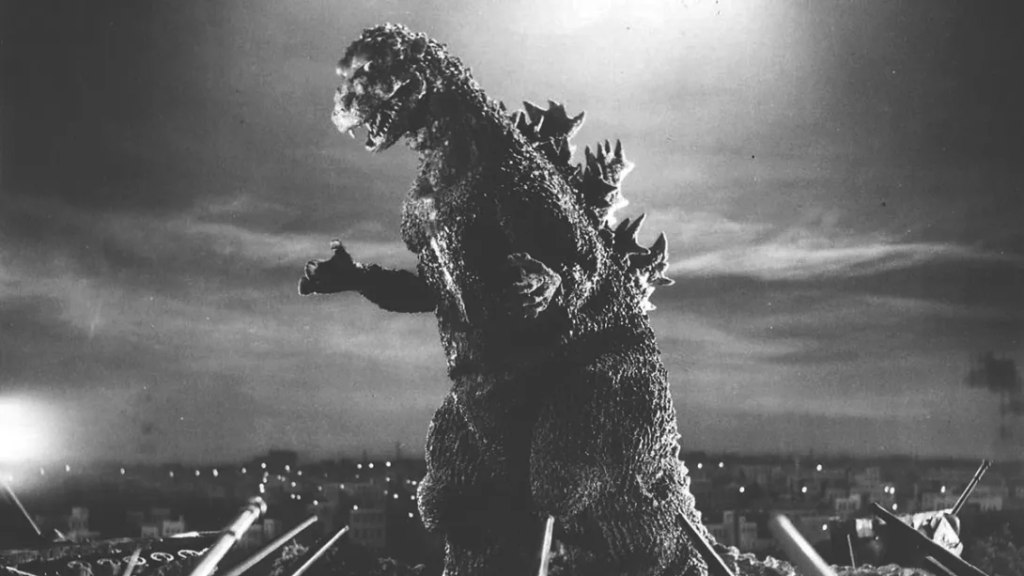

Parallel cinema is an Indian film movement that originated in the 1950’s in West Bengal, acting as an alternative to the mainstream “commercial” Indian cinema (Bollywood).
Parallel Cinema is characterized by its serious content, realism and naturalism, symbolic elements with a keen eye on the sociopolitical climate of the times. With its purpose to express the director’s frustration with society and to make people think about issues that are plaguing them.
Key Directors and Films:
The movement was initially led by Bengali cinema and produced internationally acclaimed filmmakers such as Satyajit Ray, Mrinal Sen, Ritwik Ghatak, Tapan Sinha e.t.c.
Apu Triology (1955-1959) Satyajit Ray (Includes- Pather Panchali (1955) Satyajit Ray)
Nagarik (1952) Ritwik Ghatak’s
Garm Hava (1974) M. S. Sathyu


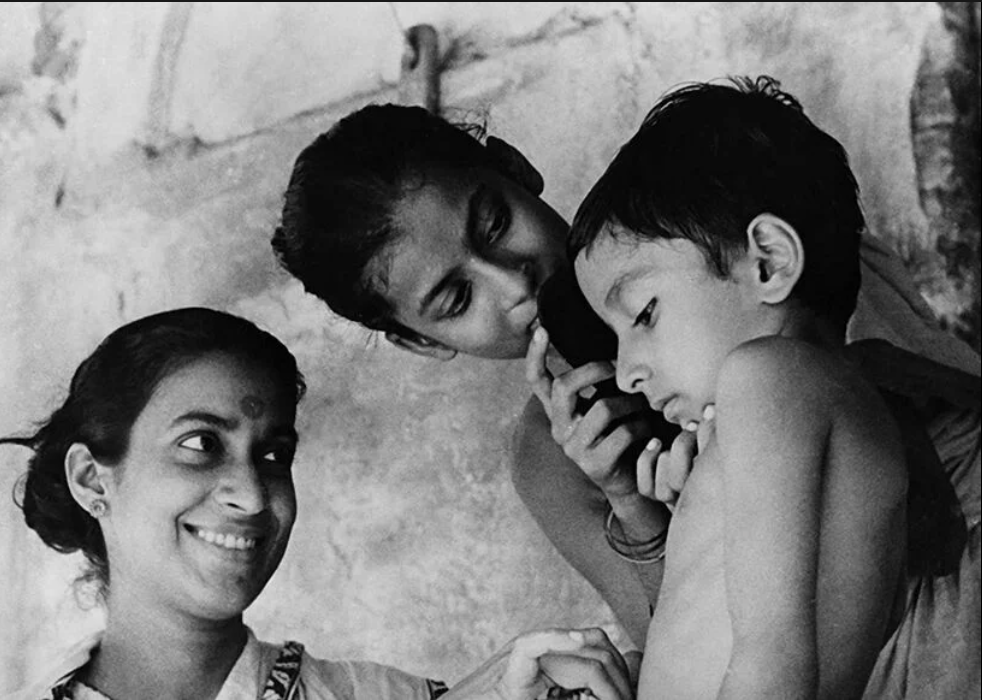
Themes/Characteristics of Parallel Cinema:
The Breakfast Club appears to have been influenced by Soviet Cinema, specifically due to its use of montage emphasising the passing of time in detention along with unity between the students – Rhythmic montage can be seen as the club dance to We Are Not Alone by Karla Devito.
Metric montage in The Royal Tenenbaums
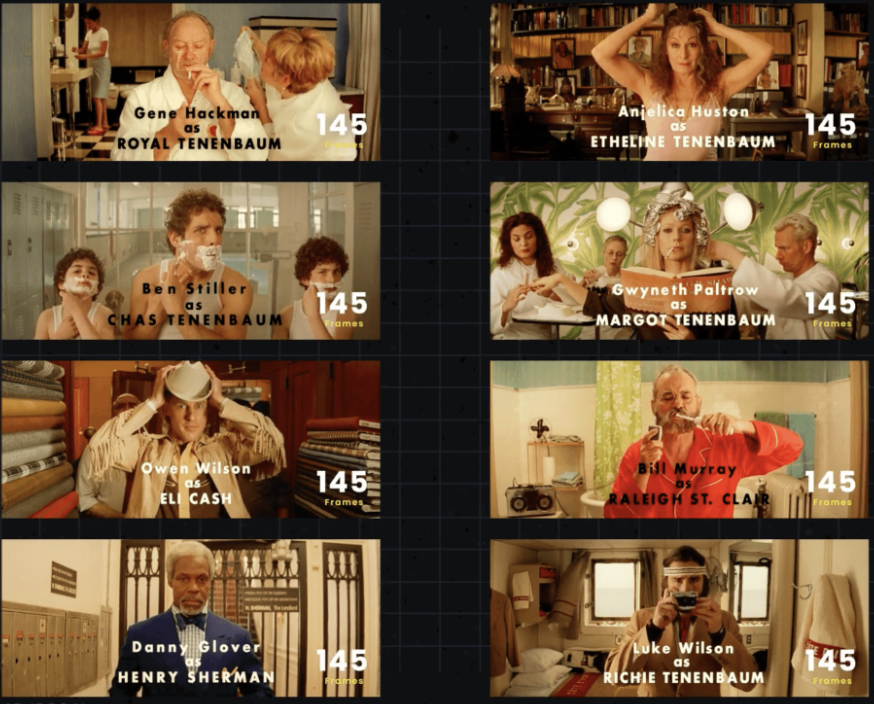
Wes Anderson effectively uses metric montage in many of his films to give the movie a fluid flow (creating tempo).
Rhythmic montage in Rocky

This montage allows Rocky’s training to be condensed into a short musical montage highlighting his determination/triumph.
Over-tonal montage in Up

Here the over-tonal montage functions almost as its own short film compressing the couples love story.
Intellectual Montage in Strike

The intellectual montage allows those two images to juxtapose, forming a new meaning/connection between the cow and the civilians (the series of shots of the deceased and murdered civilians sprawled on the ground runs parallel to the cow’s throat being brutally slashed open with a knife, as the cow slowly bleeds to death).
The Young Lady and the Hooligan (1919)
Kino Eye (1924)
The screw from another machine (1926)


